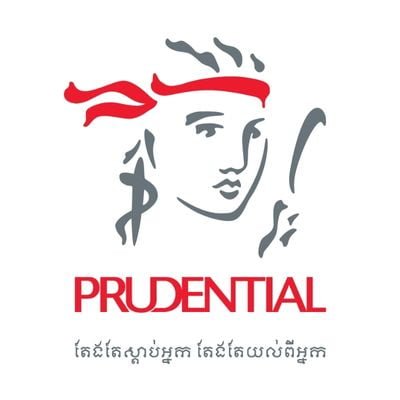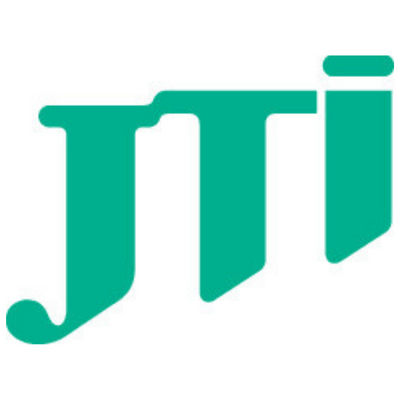In part 2 of this comprehensive 2023 mid-year review hosted by the International Business Chamber of Cambodia (IBC), we explore key insights from industry leaders in six crucial sectors: energy, ICT, services, real estate, advertising, and insurance. Each sector presents its own unique opportunities and challenges, framed by a blend of global trends, national policies, and the continuing hang-over of the Covid-19 pandemic.
The International Business Chamber of Cambodia’s mid-year review provides an insightful analysis into these diverse realms, capturing the views of top industry leaders, their challenges, strategies, and their outlook for the rest of the year.

Energy Sector: Harnessing Renewable Power and Future Opportunities
Kenneth Tang, the Australian Chamber of Commerce President, provided his assessment of the energy sector in Cambodia. Kenneth stated, “Hydro power now contributes to approximately 54% of our energy sources, marking a notable increase. Furthermore, a new rooftop solar panel initiative announced in June illustrates the nation’s commitment to renewable energy.”
Kenneth went on to explain the dichotomy within the solar sector. He noted, “There are two categories of solar power—those connected to the grid and those operating independently. The second category, the grid-connected systems, has certain quotas and a new tariff calculation method. This structural setup offers a diversified framework for solar energy production and consumption.”
Kenneth also highlighted the One Window Portal’s introduction and further elaborated on the country’s energy matrix. “Our energy source composition stands at 54% Hydro, 6% Solar, with the balance coming from coal and imports. Interestingly, we expect the demand to triple by 2040,” Kenneth mentioned. He added, “Despite renewables being the cheapest form of electricity—with solar costing as low as 3.5 cents/kWh—Cambodia’s energy costs remain relatively high compared to the low GDP per capita. This situation warrants strategic reforms and investments.”
Looking to the future Kenneth recommended continuing to focus on the potential of renewable energy in Cambodia. He commented, “Energy service companies or ESCOs are on the rise, providing comprehensive energy solutions, including finance.” He emphasized the potential investments in solar and wind energy, “For instance, a combined 10 GW from solar and 1.5 GW from wind could result in a USD 6.8 billion investment in Cambodia.” Kenneth closed with an optimistic view on the sector’s future: “We must prepare ourselves for these solar opportunities and energy-saving solutions for various buildings and business operations.”
ICT Sector: Digital Transformation and Emerging Technologies
Huawei Cambodia’s CCO, Nancy Zhang, identified significant advancements and emerging opportunities in the ICT sector since the January 2023 update. She highlighted new technologies and applications, such as Network-as-a-Service (NaaS), 5.5G, Hybrid Broadband Broadcast (HBB), AI, and the Metaverse, stating that they are “restructuring businesses, reinventing links, reinforcing connections, reshaping operations and management, and redefining experiences.” She also pointed to RLHF’s definition of AI, exemplified by applications like Chat GPT, and the continued push towards enhanced connectivity with a minimum benchmarked Quality of Service (QoS).
Nancy emphasized the digital transformation, underlining successful digital initiatives across several sectors, including e-government, e-commerce, finance, and smart cities. She drew attention to strategic projects like airports, data centers, submarine cables, highways, and speed trains, as key to this transformation. She said, “Digital transformation is not just about integrating technology into our operations; it’s about reimagining our future.”
Nancy also highlighted the development of a Digital Skill Development Roadmap, designed to build national digital competency. However, she noted, “Despite our progress, a skilled workforce gap still exists.” Alongside this, Nancy underscored the commitment to environmentally friendly solutions, mentioning new technology antennas, radio units, site power, and data center solutions for a greener approach with less carbon emission. “We’re on a path towards efficiency and carbon neutrality,” she stated.
Nancy addressed government policy priorities, such as services and digital economy, artificial intelligence, space, and spatial technology. She highlighted the Telecommunication Law of 2015 and emphasized the improvements in network infrastructure, mentioning the removal of illegal boosters and repeaters. In conclusion, Nancy stressed the commitment to making progress towards the SDG and 2030 upper-middle-income country goals, stating, “Connectivity has become the basic right of people. Our aim is to connect the least connected and build a vibrant digital economy and society.”
Services Industry: Geopolitical Challenges and Strategic Opportunities
James Roberts Partner Advisory at KPMG, noted severe challenges facing the services industry due to an uncertain global geopolitical situation, including instability in Ukraine and threats of civil unrest in Russia. Additionally, he pointed out that consecutive interest rate hikes — ten in total — have significantly curbed investment demand, negatively impacting global investment levels. In his words, “The attraction of risk-free returns with T-bills at 5.3% is further suppressing demand for high-risk assets in frontier markets such as Cambodia.”
Despite these hurdles, Roberts identified substantial opportunities tied to infrastructure and energy. He highlighted the positive impact of new legislation, like the forthcoming tax law and law on investment. He also acknowledged agriculture’s rising prominence in Cambodia, stating, “Agriculture is developing as an emerging powerhouse in Cambodia’s long-term growth story.” However, he flagged that “Environmental, Social, and Governance (ESG) issues have rapidly become the world’s number one business issue.”
Roberts was optimistic about Cambodia’s stability and its capability to achieve expected growth targets, driven by domestic industries and its low economic base. The new enforcement powers granted to the General Department of Taxation (GDT) will necessitate heightened focus on corporate compliance, he warned. However, he predicted a possible downturn in the banking sector, awaiting data from the National Bank of Cambodia.
Roberts also anticipated a strong recovery in the tourism sector, which should further stimulate Cambodia’s domestic economy. As he put it, “A vibrant tourism industry can provide a significant boost to our domestic economy, underscoring the importance of industry diversification.” The rest of 2023 will indeed see domestic and international factors continuing to shape the services industry’s trajectory in Cambodia.
Real Estate: Market Stagnation and Potential Growth Avenues
Ross Wheble, Country Head of Knight Frank Cambodia, addressed the current challenges and opportunities in the Cambodian real estate market. Wheble noted a stagnation in the landed residential sector, indicative of domestic demand, and declining property values, reflecting market distress. He said, “While we’ve seen a rise in market activity post-SEA games, the upcoming election has kept the market subdued.”
Despite these challenges, Wheble outlined several growth opportunities. He identified distressed assets, industrial and logistics sectors, and an increasing interest in the Cambodia-Vietnam border town of Bavet since the groundbreaking of the expressway as key areas of focus. “The medium-term outlook is positive, with multiple bilateral trade agreements signed and tourism returning,” Wheble noted.
He also acknowledged the potential of the agriculture/agro-processing sector, higher education, and tourism offerings to increase tourism spending and the average length of stay. Yet, he warned of a downturn in some sectors, saying, “Garment exports are down by 28%; total exports are down by 2.4%, highlighting the need for diversification of goods and destination markets.”
In his concluding remarks, Wheble stated that the country’s GDP growth forecast for 2023 is set at 5.5% according to the World Bank. He also mentioned a resurgence in the agriculture and industry sectors and a return of international tourist arrivals. However, he warned that “global instability and lack of liquidity remain significant concerns,” adding, “Chinese FDI has not returned as expected, and there’s an oversupply that needs to be absorbed.” Despite these challenges, Wheble’s overview suggests that with strategic adjustments, the real estate sector could see significant growth opportunities in the coming years.
Advertising Industry: Digital Dominance and Innovations in Advertising
Tim Grintal, Chief Marketing Officer of WING, presented a nuanced portrait of the current state of the advertising industry. Grintal noted, “E-commerce continues to be dominated by social commerce. In key industries, we are witnessing a trade and offer war, making the app space even busier, challenging its stickiness.” He pointed out that artificial intelligence (AI) is continually improving and seeing broader use in creative tasks and chats. As a testament to the shifting trends, he highlighted the growth of platforms like TikTok and the introduction of the first 3D out-of-home (OOH) advertising in Cambodia.
Grintal shed light on the industry’s continued evolution with VR and AR development, emphasizing that investment in technology today would lead to optimization in the future. Personal data utilization was stressed as a critical factor in advertising success. Grintal stated, “Making use of your own data enables personalization and speed in delivering advertising messages. The omnichannel strategy has become a necessity.”
He encouraged the industry to be adventurous with new platforms and highlighted the potential of AI in optimizing processes. Grintal provided a sobering update on advertising budgets, revealing, “Despite all the advancements and opportunities, there’s been no growth in advertising budgets year-to-date.” He also noted that ad tech use remains relatively rare, and the use of first-party data minimal, with finance and telecom sectors leading the way.
In conclusion, Grintal acknowledged the post-Covid return of events, but noted the enduring shift towards digital. He highlighted the rise of start-ups and observed that local consumers were still willing to share their information. Offering specifics, he said, “Meta boasts 12.8 million users, TikTok has 8 million, Instagram has 2 million, and Google and YouTube together command an audience of 12 million.” Thus, while challenges persist, the opportunities for growth and innovation in the advertising sector are abundant.
Insurance Industry: Current Challenges and Prospects for Growth
Youk Chamroeunrith, Group CEO of Forte Insurance, outlined a mixed picture of the insurance industry in Cambodia. Chamroeunrith noted, “Medical claims incurred have increased by almost 55% compared to Q1 2022. Interestingly, despite this surge, the Gross Premium decreased for the first time in a decade, by 1.9%.” He also pointed out that while there has been modest growth in Auto insurance, up by 6.1%, a slowdown in vehicle leasing could impact future growth.
Chamroeunrith discussed how conservative banking practices, with fewer loans being issued, could stifle growth. However, he remained optimistic about growth opportunities through government investment in infrastructure work – particularly benefiting property and construction insurance. He stated, “The introduction of Compulsory Auto Insurance also presents a significant opportunity, making insurance more accessible and affordable for locals.”
On the subject of digital innovation and agricultural investments, Chamroeunrith remarked, “Improvements to claims and customer experience through digital innovation have been significant. The growth and investment in agriculture also present an untapped opportunity.” He referenced Forte’s Weather Index Crop Insurance program and the national aim to become a primary exporter of cashews as areas of potential growth.
In his closing remarks, Chamroeunrith shared insights about the industry’s performance, “Insurance industry growth is not as expected – Q1 only witnessed a 6.9% growth compared to last year.” He added, “Property, Medical, and Auto insurance remain the largest share at 77% of Gross Premium in Q1 2023, with a significant increase in Gross Premium for Property, by 15.7%.” Despite the challenges, Chamroeunrith’s analysis suggests that with strategic initiatives and the embracing of digital innovation, the insurance industry can find new paths to growth.
The 2023 mid-year review paints a complex picture of an economy in flux, shaped by global trends, national policies, and the continuing impact of the Covid-19 pandemic. It captures the spirit of resilience, ingenuity, and determination that characterizes Cambodia’s business community. Even as we anticipate the unknowns of the remaining year, it’s clear that these sectors are actively evolving, seeking new opportunities, and embracing change as the key to growth and prosperity.









